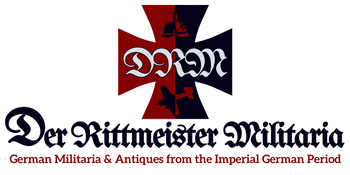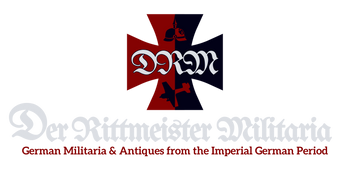Mecklenburg-Schwerin (Großherzogtum Mecklenburg-Schwerin)
CLICK HERE FOR ALL ITEMS RELATED TO MECKLENBURG-SCHWERIN
Basic Information
- Official Name: Grand Duchy of Mecklenburg-Schwerin (Großherzogtum Mecklenburg-Schwerin)
- Capital: Schwerin
- Motto: "Per aspera ad astra" (Through hardships to the stars)
- Established: 1815 as a Grand Duchy (earlier as the Duchy of Mecklenburg-Schwerin in 1348)
- Dissolution: Became the Free State of Mecklenburg-Schwerin in 1918 following the abdication of Grand Duke Friedrich Franz IV.
-
Key Symbols:
- Coat of Arms: A bull’s head with a crown, representing the Mecklenburg dynasty.
- Flag: Blue, yellow, and red horizontal stripes.
Geographical Overview
-
Location:
Mecklenburg-Schwerin was located in northern Germany, bordered by the Baltic Sea to the north, Denmark to the northwest, and Prussia to the south. Key cities included Schwerin, Rostock, and Wismar. -
Size:
A large but sparsely populated state, characterized by rural landscapes, forests, and coastal regions. -
Land Features:
- Baltic Sea Coast: Provided access to maritime trade and fishing.
- Lake Schwerin: One of the largest lakes in Germany, surrounding the capital city.
- Mecklenburg Plain: Fertile farmland and rolling hills.
Historical Timeline
-
Early Mecklenburg-Schwerin:
- 1167: Mecklenburg became a feudal territory under the Holy Roman Empire.
- 1348: Elevated to a duchy by Emperor Charles IV.
- 1701: Split into Mecklenburg-Schwerin and Mecklenburg-Strelitz due to dynastic conflicts.
-
Grand Duchy Era (1815–1918):
- 1815: Elevated to a Grand Duchy at the Congress of Vienna.
- 1871: Became part of the German Empire while maintaining its autonomy.
- Economically focused on agriculture, shipbuilding, and fishing.
-
Decline (1918):
- The abdication of Grand Duke Friedrich Franz IV during the German Revolution ended the monarchy, transitioning into the Free State of Mecklenburg-Schwerin.
Notable Rulers and Leaders
- Friedrich Franz I (1815–1837): The first Grand Duke, modernized agriculture and governance.
- Friedrich Franz II (1842–1883): Advocated for infrastructure development and social reforms.
- Friedrich Franz IV (1897–1918): The last Grand Duke, abdicated peacefully during the German Revolution.
Military and Political Strength
-
Military Contributions:
- Mecklenburg-Schwerin provided troops to the German Imperial Army, known for their disciplined infantry.
- Naval support was significant due to its access to the Baltic Sea.
-
Political Role:
- Mecklenburg-Schwerin retained a unique political system, with a feudal assembly (Landstände) that influenced governance.
- Played a supportive role in German unification under Prussian leadership.
Cultural Contributions
-
Architecture:
- Schwerin Castle: A stunning neo-Renaissance palace on an island in Lake Schwerin, serving as the Grand Dukes' residence.
- Wismar Old Town: A UNESCO World Heritage Site showcasing medieval Hanseatic architecture.
-
Arts and Literature:
- Mecklenburg-Schwerin fostered Romantic composers and artists, including Johann Wilhelm Hertel and painters of the Düsseldorf school.
- Supported traditional folk music and storytelling, reflecting the region’s rural character.
-
Education and Science:
- Promoted advancements in agriculture, particularly innovations in crop rotation and livestock breeding.
- The University of Rostock, founded in 1419, became a center for theology, medicine, and law.
-
Cuisine:
- Known for seafood dishes like Mecklenburger Fischsuppe (fish soup) and hearty meat stews.
- Famous for its Rote Grütze, a red fruit pudding dessert.
Fall of Mecklenburg-Schwerin
-
World War I (1914–1918):
- Economic hardships and food shortages led to unrest among the rural population.
-
German Revolution (1918):
- Friedrich Franz IV abdicated, and the Grand Duchy transitioned to a Free State.
-
Post-WWII (1945):
- Incorporated into East Germany before becoming part of Mecklenburg-Western Pomerania in reunified Germany.
Connections to Products
-
Cultural Artifacts:
- Miniature replicas of Schwerin Castle and Wismar’s medieval buildings.
- Folk art and traditional Mecklenburg pottery.
-
Military Memorabilia:
- Mecklenburg-Schwerin regimental badges, medals, and uniforms from the Imperial Army.
- Naval items tied to the region’s maritime contributions.
-
Historical Documents:
- Maps and records detailing the Grand Duchy’s governance and landholdings.
- Treaties and correspondence related to Mecklenburg’s role in German unification.
-
Agricultural Tools and Recipes:
- Tools reflecting Mecklenburg’s agricultural history, such as plows and seed drills.
- Recipe books featuring regional dishes and desserts.
-
Tourism-Related Items:
- Guidebooks and postcards depicting Lake Schwerin and the Baltic coastline.
- Commemorative items celebrating Schwerin Castle’s legacy.











